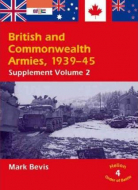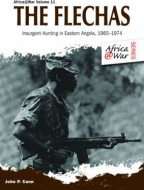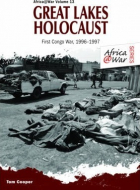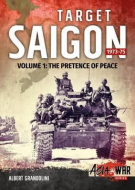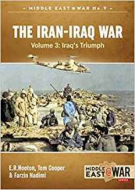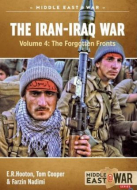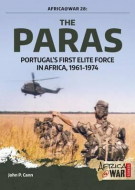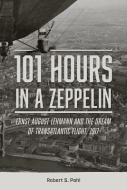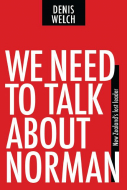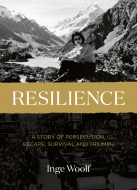
- Agriculture
- Architecture & Design
- Arts & Photography
- Biography
- Business
- Calendars and Diaries
- Childrens (All)
- Childrens (Illustrated)
- Childrens (Picture flats)
- Childrens (Te Reo)
- Classics
- Cooking, Food & Drink
- Craft & Hobbies
- Design (Art / Graphics)
- Design (Interiors)
- Education
- Fashion
- Fiction & Literature
- Fiction - Young Adult
- Gift Ideas
- Health & Wellbeing
- History
- Home & Garden
- Humour & Gift
- Instead of a Card Poems
- Military
- Music
- New Zealand
- NZ (History)
- NZ (Landscapes)
- NZ (Pictorial)
- Poetry
- Reference
- Religion & Faith
- Science & Nature
- Sport & Recreation
- Stationery
- Taschen : 40th Anniversary Edition
- Taschen : BA Basic Art
- Taschen : BU Bibliotheca Universalis
- Te Reo Māori
- Transport
- Travel
History (457)
|
British and Commonwealth Armies 1944-45 Helion Order of Battle Vol 2
ISBN: 9781874622901 Author: Mark Bevis Publisher: Helion & Company The two supplements volumes presented round off the author's comprehensive coverage of this subject. Supplement volume 2 contains five chapters providing data c... The two supplements volumes presented round off the author's comprehensive coverage of this subject. Supplement volume 2 contains five chapters providing data covering formations in North Africa, the Mediterranean, Burma/India, on the Home Front, overseas garrisons and Special Forces. The units covered range from the South African 6th Armoured Division to the 1940-41 garrison of Iceland. Key sales points: * Careful presentation combined with a host of hard-to-find information will ensure this will become a standard source for order-of-battle data about the British & Commonwealth armies. / * All organizations are analyzed down to platoon level; listings include specific types of equipment and weaponry used, along with explanatory notes. / * Clearly laid-out and easy-to-use data Bind: paperback Pages: 96 Dimensions: 220 x 300 mm Publication Date: 04-02-2016 |
$49.99 |
|
|
The Flechas (Africa@War 11)
ISBN: 9781909384637 Author: John P. Cann Publisher: Helion & Company In 1961, Portugal found itself fighting a war to retain its colonial possessions and preserve the remnants of its empire. It was almost completely unprepared to... In 1961, Portugal found itself fighting a war to retain its colonial possessions and preserve the remnants of its empire. It was almost completely unprepared to do so, and this was particularly evident in its ability to project power and to control the vast colonial spaces in Africa. Following the uprisings of March of 1961 in the north of Angola, Portugal poured troops into the colony as fast as its creaking logistic system would allow; however, these new arrivals were not competent and did not possess the skills needed to fight a counterinsurgency. While counterinsurgency by its nature requires substantial numbers of light infantry, the force must be trained in the craft of fighting a 'small war' to be effective. The majority of the arriving troops had no such indoctrination and had been readied at an accelerated pace. Even their uniforms were hastily crafted and not ideally suited to fighting in the bush. In reoccupying the north and addressing the enemy threat, Portugal quickly realized that its most effective forces were those with special qualifications and advanced training. Unfortunately, there were only very small numbers of such elite forces. The maturing experiences of Portuguese and their consequent adjustments to fight a counterinsurgency led to development of specialized, tailored units to close the gaps in skills and knowledge between the insurgents and their forces. The most remarkable such force was the flechas, indigenous Bushmen who lived in eastern Angola with the capacity to live and fight in its difficult terrain aptly named 'Lands at the End of the Earth'. Founded in 1966, they were active until the end of the war in 1974, and were so successful in their methods that the flecha template was copied in the other theaters of Guiné and Mozambique and later in the South African Border War. The flechas were a force unique to the conflicts of southern Africa. A flecha could smell the enemy and his weapons and read the bush in ways that no others could do. He would sleep with one ear to the ground and the other to the atmosphere and would be awakened by an enemy walking a mile away. He could conceal himself in a minimum of cover and find food and water in impossible places. In short, he was vastly superior to the enemy in the environment of eastern Angola, and at the height of the campaign there (1966-1974) this small force accounted for 60 per cent of all enemy kills. This book is the story of how they came to be formed and organized, their initial teething difficulties, and their unqualified successes. Bind: paperback Pages: 72 Dimensions: 210 x 300 mm Publication Date: 19-10-2014 |
$49.99 |
|
|
Great Lakes Holocaust (Africa@War 13)
ISBN: 9781909384651 Author: Tom Cooper Publisher: Helion & Company Great Lakes Holocaust' is the first in two volumes covering military operations in Zaire - as the Congo was named from 1971 until 1997 - and the Democratic Repu... Great Lakes Holocaust' is the first in two volumes covering military operations in Zaire - as the Congo was named from 1971 until 1997 - and the Democratic Republic of Congo at the turn of the 21st century. This volume explores the events of the 1980s and 1990s in Rwanda and Uganda, which eventually spilled over the borders into Zaire, resulting in one of the worst tragedies ever to befall an African region. The narrative traces the ascent of crucial Rwandan, Congolese and Ugandan military and political figures, and their connections within influential business and political circles in and outside Africa. It examines the build-up of the Zairian military under the government of Dictator Mobutu Sese Seko in the 1960s and 1970s, and provides an in-depth study into reasons for its near-collapse in the early 1990s. The military build-up of Rwanda and Uganda is discussed in detail as is their planning for operations inside Zaire, and the global logistic tail that provided the Rwandan military, particularly, but also most of its opponents, with a capability of not only waging war beyond their borders, but - in the case of Rwanda - of invading and practically conquering a country the size of Western Europe or the USA east of the Mississippi. The book further traces the covert Rwandan military actions inside Zaire, initially run under the guise of an insurgency by one of Zaire's ethnic minorities; how ever-deepening Rwandan operations inside Zaire were practically dictated by concentrations of Hutu refugees; and how the insurgency - led by Laurent-Désiré Kabila who was installed by key Rwandan and Ugandan military and political figures - developed into an organization that sought autonomy from the military and political dictates of Rwanda, in turn delivering a direct reason for the Second Congo War which was fought from 1998-2003. Bind: paperback Pages: 72 Dimensions: 210 x 300 mm Publication Date: 19-11-2013 |
$49.99 |
|
|
Target Saigon 1973-75 Volume 1 (Asia@War 5)
ISBN: 9781911512349 Author: Albert Grandolini Publisher: Helion & Company After 27 years of conflict it seemed that peace would finally settle on the Indochina peninsula on 27January 1973 with the signing of a peace accord in Paris. T... After 27 years of conflict it seemed that peace would finally settle on the Indochina peninsula on 27January 1973 with the signing of a peace accord in Paris. The North Vietnamese had previously launched their greatest offensive against South Vietnam but fell short of their objectives, the destruction of the Army of the Republic of Vietnam (ARVN) and the destruction of the Saigon regime. They now proposed, in exchange for the release of the US prisoners of war, the withdrawal of the remaining American forces in Vietnam. Far from feeling committed by the agreement, the Hanoi leadership prepared the next round, the ultimate conquest of South Vietnam now that Washington had completely evacuated its last troops from the country. That first volume sets the scene, by making an assessment of the situation on the field, in both tactical and strategic perspectives. It also examines the last episode of the US gradual withdrawal as well as the implementation of part of the Peace Accords with the removal by the US Navy of the mines sown by its aircraft from the North Vietnamese ports and inland waters. It then presents the respective opposing armed forces and will particularly focus on the North Vietnamese rebuilding after the havoc wrought by the American aerial campaign of 1972. Furthermore, the expansion of the famous Ho Chi Minh Trail, vital for the logistical support of the communist troops, is thoroughly detailed. The South Vietnamese on their part placed great emphasis on developing their own air force in order to try to replace the withdrawal of American airpower. Most at all, it also details the initial fighting that not only resumed but soon escalated into divisional-level battles where the South Vietnamese still prevailed. Bind: paperback Pages: 88 Dimensions: 210 x 300 mm Publication Date: 21-11-2017 |
$49.99 |
|
|
The Iran-Iraq War Volume 3 (Middle East@War 9)
ISBN: 9781911512448 Authors: Tom Cooper, E R Hooton, Farzin Nadimi Publisher: Helion & Company The Iran-Iraq War was one of the bloodiest conflicts of the 20th Century and accidentally created the current nightmare of Islamic fundamentalist terrorism. The... The Iran-Iraq War was one of the bloodiest conflicts of the 20th Century and accidentally created the current nightmare of Islamic fundamentalist terrorism. There have been many books on the conflict but this is the first detailed military history using materials from both sides, as well as materials obtained from US Intelligence circles and British Governmental archives. It provides a unique insight into a war which began through miscalculation and rapidly escalated into the longest conventional conflict in the post-Second World War era. The third volume covers the last two years of the war on the Southern front, where Iranians made their last supreme effort to break through Iraqi lines during the winter of 1986-1987. Iraqi defences just about held. For a year, there was an ominous silence, but then Iraq launched a series of devastating blows that recovered the Faw Peninsula, pulverised weakly-occupied Iranian positions, and drove the frontlines back to the international border. Iran was left with no option but to sue for peace. Bind: paperback Pages: 80 Dimensions: 210 x 300 mm Publication Date: 05-04-2018 |
$55.00 |
|
|
The Iran-Iraq War Volume 4 (Middle East@War 10)
ISBN: 9781911512455 Authors: Tom Cooper, E R Hooton, Farzin Nadimi Publisher: Helion & Company The Iran-Iraq War was one of the bloodiest conflicts of the 20th Century and accidentally created the current nightmare of Islamic fundamentalist terrorism. The... The Iran-Iraq War was one of the bloodiest conflicts of the 20th Century and accidentally created the current nightmare of Islamic fundamentalist terrorism. There have been many books on the conflict but this is the first detailed military history using materials from both sides, as well as materials obtained from US Intelligence circles and British Governmental archives. It provides a unique insight into a war which began through miscalculation and rapidly escalated into the longest conventional conflict in the post-Second World War era. Part 4 in this mini-series covers the warfare between Iran and Iraq on the Central and Northern Fronts. Difficult terrain made it problematic for either side to assemble overwhelming superiority. Following initial Iraqi attacks that seized some territory, the Iranians began gradually nibbling back until achieving some success in the center, in 1982. Subsequently, the Central Front saw only minor conventional battles until Iraq launched several major blows in 1988. In the north, fighting primarily revolved around several Kurdish insurgencies in northern Iraq, and culminated in the horror of the Halabcheh gas attack. The final campaign of the war saw Iraq-supported Iranian émigrés launching a spectacular, but also a swiftly-crushed, invasion of their homeland. Bind: paperback Pages: 80 Dimensions: 210 x 300 mm Publication Date: 19-04-2018 |
$55.00 |
|
|
The Paras (Africa@War 28)
ISBN: 9781911512486 Author: John P. Cann Publisher: Helion & Company Portuguese paratroopers or "paras" began as a stepchild of the army and found a home in the Portuguese Air Force in 1955. Initially, the post-World War Two Port... Portuguese paratroopers or "paras" began as a stepchild of the army and found a home in the Portuguese Air Force in 1955. Initially, the post-World War Two Portuguese Army seemed to have had mixed emotions about the need for elite, special-purpose forces that operated in small units with the attendant flexibility and elevated lethality. Shock troops have been traditionally controversial, and even the vaunted military theorist Baron Karl von Clausewitz saw little point in them. The history of the paras in the Portuguese Army is illustrative of this ambivalent view. Nevertheless, in a "war of the weak" in which insurgents avoid government strengths and exploit its vulnerabilities using agility, deception, and imagination, such small, crack government units are particularly well suited to counterinsurgency operations. This appreciation emerged with the threat of a new kind of war in Portuguese Africa, an insurgency, and the new and visionary Air Force well understood the potential of paras when combined with the mobility of the helicopter. The Air Force saw an urgent need for troops who could fight an unconventional war, who could not only defeat an enemy but separate him from the population in which he sought concealment and support and on which he depended for funding, recruits, and intelligence. These were specialised warfighters who in one minute were physically destroying an insidious enemy and in the next administering aid and support and protecting a vulnerable population. These were just the troops that Portugal would require for military success in its approaching battle fought between 1961 and 1974 to retain its African possessions, and this vision would be realized on the African battlefield with devastating consequences. This book tells the paras' story as researched from Portuguese sources. It details how they were formed and trained and how they developed their imaginative, effective, and feared tactics and applied them in operations to protect the population from insurgent predations and destroy a vicious enemy. Bind: paperback Pages: 72 Dimensions: 210 x 300 mm Publication Date: 22-02-2017 |
$49.99 |
|
|
101 Hours in a Zeppelin
ISBN: 9780764366413 Author: Robert Pohl Publisher: Schiffer Books ased on the original letters of physics professor Robert Wichard Pohl, who spent several years flying on zeppelins during the First World War, this book tells t... ased on the original letters of physics professor Robert Wichard Pohl, who spent several years flying on zeppelins during the First World War, this book tells the story of the first flight to exceed 100 hours in the air. Along the way, it tells the story of those men responsible for the flight, as well as the history of both airship development and the continuing interest in transatlantic flight. The particular flight described in Pohl's account was captained by Ernst August Lehmann, Germany's foremost airship captain, who was killed on the Hindenburg in 1937. It shows how this flight put into operation the lessons learned, both in the development of airships and their use in the First World War, to prove that these fragile giants were capable of flying across the Atlantic. In doing so, the book fills a gap between the two great areas of interest in airships. This is a book for aviation history enthusiasts that tells the full story of a well-known but little-described chapter in aviation history. Bind: hardback Pages: 208 Dimensions: 152 x 228 mm Publication Date: 28-04-2023 |
$65.00 |
|
|
We Need To Talk About Norman :New Zealand's Lost Leader
ISBN: 9781991103055 Author: Denis Welch Publisher: Quentin Wilson Publishing Why do we need to talk about Norman? Because although Norman Kirk was prime minister for barely 21 months some 50 years ago, he still speaks to us. His belief i... Why do we need to talk about Norman? Because although Norman Kirk was prime minister for barely 21 months some 50 years ago, he still speaks to us. His belief in the state as a force for good and his style of leadership could and should be powerful guides for politics in the 21st century. Kirk was not a supporter of the neoliberalist ideology that has given us widening inequality, rising poverty and the virtual obliteration from public debate and policy-making of the workers who create this country’s wealth. His idea of a healthy country was, famously, one whose citizens could realistically expect to find “someone to love, somewhere to live, somewhere to work and something to hope for”. But the social contract central to politics in his day has been broken, and state and society are now run almost exclusively on business lines. This book, by veteran journalist and political commentator Denis Welch, is aimed at recovering what Norman Kirk stood for – a sense of government with a clear moral purpose, in which there is daylight between public service and the commercial world. Bind: paperback Pages: 168 Dimensions: 152 x 229 mm Publication Date: 14-06-2023 |
$39.99 |
|
|
Resilience : A story of persecution, escape, survival and triumph
ISBN: 9780473662080 Author: Inge Woolf Publisher: Holocaust Centre of New Zealand Resilience is a Holocaust story and a New Zealand story. Born to a prosperous Jewish family, Inge Woolf witnessed the Nazis marching into Vienna in March 1938. ... Resilience is a Holocaust story and a New Zealand story. Born to a prosperous Jewish family, Inge Woolf witnessed the Nazis marching into Vienna in March 1938. To escape certain death, the family audaciously boarded a train to the heart of Nazi Germany – Berlin – and from there caught a plane to England, pretending they were going on holiday. Hiding their Jewish identity until after World War II, Inge and her family began a new life as impoverished refugees. A move to New Zealand signalled new beginnings. Inge met the love of her life, Ronald Woolf, and together they created the country's pre-eminent photographic studio. They settled in Wellington, raising two children when tragedy struck again with Ron killed at age 57 in a helicopter crash in 1987. Resilience is ultimately the story of a woman who harnessed her past and used it to encourage a more cohesive, inclusive society. In her later years, Inge was pivotal in establishing the Holocaust Centre of New Zealand and was its founding director. She educated thousands on the Holocaust and the dangers of antisemitism, racism and prejudice, often observing that hate starts small. She was often called on by the media to comment about antisemitism and would speak freely about the need to remember the lessons learned from the Nazi genocide. Inge Woolf received a QSO in 1992 for services to the community. She was a finalist in the 2019 Women of Influence Awards – Community Hero category. Inge Woolf died in 2021 aged 86. Bind: paperback Pages: 200 Dimensions: 170 x 240 mm Publication Date: 11-04-2023 |
$35.00 |


